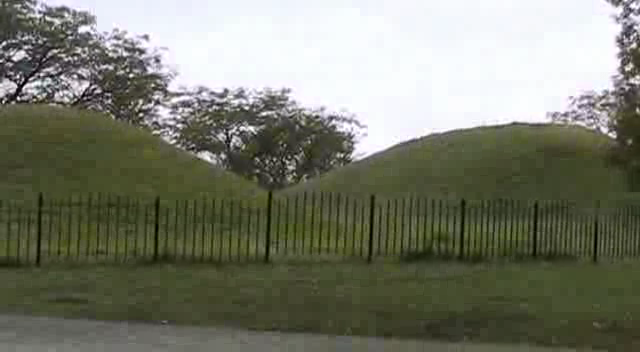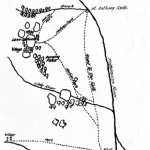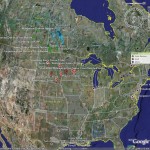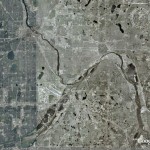Learn More
Below are listed some resources for learning more about Dakota people, about US-Indian relations nationally and in Minnesota, and about specific sites highlighted in the Bdote Memory Map. Too many of the links are outdated. The work to research and update to current working resources is underway. Please keep in mind that history is created from specific cultural perspectives. Many of the primary resources that present Dakota history and identity, and US-Indian relations, are based on assumptions that not only arise from non-Dakota perspective, but actively exclude any indigenous perspective. Challenging these assumptions is much more than a matter of political correctness; it is a requirement for any accurate understanding of our past. For instance, the origin of the Dakota War has often been presented as an incident in which Dakota youth killed a farm family, an event that somehow sparked a violent territory-wide conflict that necessitated the punishment of all Dakota people. Such a portrayal, illogical though it may be, makes sense from a specific cultural perspective; and only from that perspective. In using any historical resource, it is important to question the perspective from which the resource is created, and how that perspective shapes the presentation of facts. These resources are only a beginning, an initial supplement to the introductory information in this site. Sources with a Dakota point of view are rare. Most of these resources express information from a dominant culture point of view. For example, “This region was acquired by the U.S. government by treaty in 1805.” The word “acquired” is clearly not chosen by a Dakota writer.
General Resources
- American Indian Policy Center
- Cradleboard Project
- Oyate.org
- UN Convention on Genocide, 1948
- Minnesota History blog, many pieces on Dakota people and Dakota sites, Bruce White
- Response to Statehood, Dakota and Ojibwe people talk about Mnisota
- Minnesota Humanities Center Resources – (maintain a critical eye when reading any writings ABOUT Dakota people)
Background information on Bdote Memory Map sites:
Coldwater Springs
- Bruce White – History of Coldwater
- Sacred Site and Traditional Cultural Property Analysis Downloadable file – National Park Service
- Bruce White piece on the Park Service, Dakota people, and Camp Coldwater
- Preserve Camp Coldwater Coalition Groups come together to help preserve the Coldwater Spring area. This site includes links to new stories, articles, and legislation dating back 10+ years.
- Day One – Dakota Reclaiming Coldwater Lots of raw footage of the Coldwater ceremony site, as well as Jim Anderson talking about the purpose of the ceremony and the decision of city officials to let the ceremony occur peacefully.
- Day Three – Dakota Reclaiming Coldwater The Dakota celebrating are told that their time is up at 3pm the following day, but the ceremony has been scheduled to last into the night. Jim Anderson speculates on what he hopes will happen.
- Day Four – Dakota Reclaiming Coldwater A press conference discusses the broken treaties in the history and the future of the coldwater area.
Coldwater Hearing
On Feb 23, 2009, a open house was held at the bureau of mines in Minneapolis. Several Dakota speak about the future of Coldwater Spring and ask that the state and the national parks service return the 27-acre site to the Dakota people.
- Coldwater – Bureau of Mines Pt 1
- Coldwater – Bureau of Mines Pt 2
- Coldwater – Bureau of Mines Pt 3
- Coldwater – Bureau of Mines Pt 4
- Coldwater – Bureau of Mines Pt 5
- A History of Camp Coldwater
Fort Snelling
- Take Down the Fort – Dakota led movement
- Fort Snelling Renovation, article from Mpls. StarTribune
- Historic Fort Snelling – Minnesota Historical Society
Web Resources
- The Dakota Commemorative March. This 7-day 15-mile march is held annually to remember the forced march and imprisonment of the 1700+ Dakota men, women, and children who surrendered to the United States in 1862. Includes eyewitness stories and links to local tribal web sites.
- May 2008 Wagon-Train at Fort Snelling Raw footage of the protest at Fort Snelling. Several Dakota lay down in front of covered wagons during a reenactment/celebration of the Sesquicentennial. They are arrested.
- Dakota protesters meet sesquicentennial wagon train
Publications
- Fort Snelling Concentration Camp Dakota Prisoners, 1862-63 The American Indian Quarterly – Volume 28, Number 1&2, Winter/Spring 2004, pp. 170-174
- Fort Snelling from its foundation to the present time UM TC Wilson Library (976.8 M66c v.8 )
- Historic Ft Snelling Chronicles UM TC Magrath Gov Pub (State Docs) (MN 8060 HC ) (ST PAUL CAMPUS)
Minnehaha Falls and Creek
Minnesota River
Mississippi River
Pike Island
St. Anthony Falls
- Industry at St. Anthony Falls – flour milling and railroads with links
- Archeology of the Minnesota Riverfront, article from the Minnesota Archeologist, available online
Web Pages
Books available through Minneapolis Public Libraries
- Saint Anthony Falls rediscovered, the architectural heritage of Minneapolis’s St. Anthony Falls historical district. Minneapolis: Minneapolis Riverfront Development Coordination Board, 1980.
- Hansen, Marcus Lee. Old Fort Snelling, 1892-1938. Minneapolis, Ross & Haines, 1958.
- Kane, Lucile M. The falls of St. Anthony: the waterfall that built Minneapolis. St. Paul: Minnesota Historical Society Press, 1987.
- Stevens, John Harrington. Personal recollections of Minnesota and its people: and early history of Minneapolis. Minneapolis: [Tribune Job Ptg. Co.], 1890.
- Zellie, Carole. Geographic features and landscape change at Saint Anthony Falls. St. Paul, Minn.: Landscape Research, [1989].
Maps
- Minnesota Historical Society Home page for online map exhibits and resources of Minnesota Historical Society.
- New France 1720
- Detail of Joseph N. Nicollet’s Hydrographical Map of the Upper Mississippi River
- Pre-European settlement vegetation of Minnesota
- Department of Natural Resources Minnesota Department of Natural Resources map collections – many printable, many viewable online
- Maps of metro area Mississippi, St. Croix and Minnesota River
- Fisk Layered Map
- Native resources website – map
- Aboriginal Mapping Network
- Indigenous Mapping on and with Google
- lmic.state.mn.us True North – Mapping History – MHS
- Photos connected to map of Fort Snelling area
- Minnesota – Old Trails and Roads
- New World Lands in Print Not specifically about the Bdote area, but excellent background for mapping curricula.






